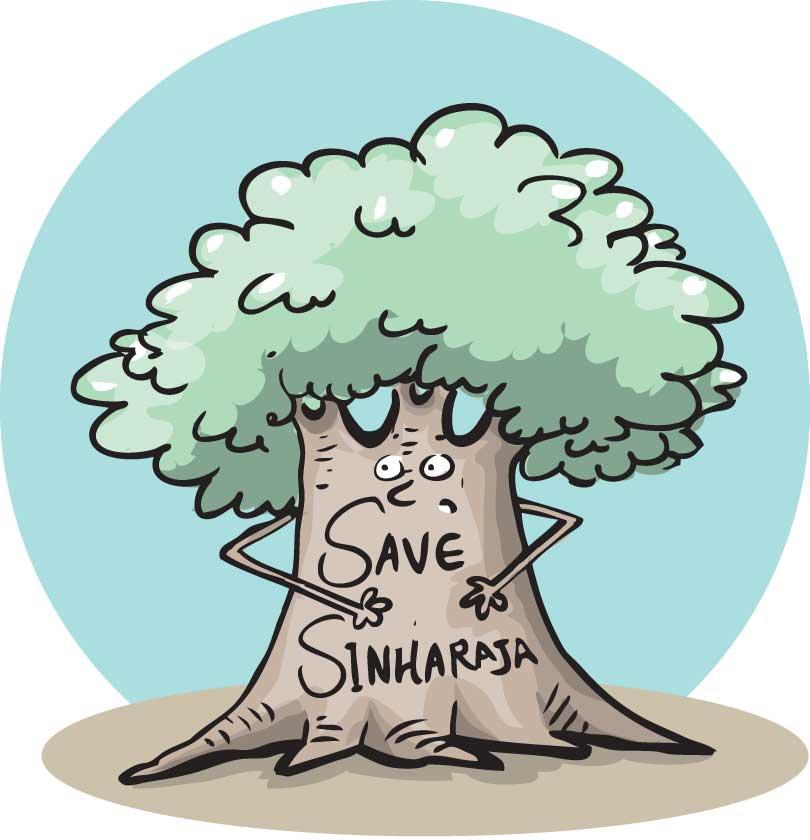Reply To:
Name - Reply Comment

What we are doing to the forests of the world is but a mirror reflection of what we are doing to ourselves and to one another -Mahatma Gandhi
On July 22, 2004, the then cabinet took a decision to obtain recommendation to claim and connect a half-a km buffer zone for the Sinharaja forest. It was deemed essential as the Land Reform Commission (LRC) under which most of the land falls, had been releasing lands to hoteliers, plantation companies and other investors, thus jeopardizing the future of the world heritage site.
It had been pointed out that implementation of the cabinet decision would help annexe nearly 3000 hectares of primary forest lands to Sinharaja which covers 11,187 hectares. If any government went ahead with the 2004 Cabinet decision and obtained recommendation it would have been just a matter of the Forest Conservation Department acquiring the required land and designating it as buffer zone. However for fifteen years consecutive governments neglected this national duty and as a result to date the country’s last primary tropical forest Sinharaja is without a buffer zone.
In fact for long conservationists have been demanding a one kilo-metre buffer zone for the forest which is a biosphere reserve and World heritage Site declared by UNESCO with over 60% of its plants considered endemic and rare.
However when Cabinet decision PS/CS/26/2004 aiming at a half a kilometre buffer zone was taken, the conservationists were still optimistic as it appeared that the government had taken some interest in the matter.
The recent years saw President Maithripala Sirisena moving to annex the peripheral forests, most of them in the district of Kalutara, under Sinharaja. While this was viewed as a positive move the topic of buffer zone remained unaddressed. The failure to implement the cabinet decision for 15 long years has endangered the very existence of Sinharaja. In addition to the rapid depletion of the forest cover in the surrounding areas, of late there had been reports of bio thefts of Sinharaja fauna as well.
Last year saw the State Plantations Corporation (SPC) withdrawing a few projects in the Knuckles mountain range after public protests, with conservationists pointing out that the lands released to the projects in fact belonged to the Knuckles conservation area. The buffer zone declared by the UNESCO is yet to be gazetted and as a result it does not fall under any legislation, thus leaving room for interested groups to release it for investors. When contacted by the Daily Mirror, the Department of Forest Conservation revealed that it is in the process of preparing legislation to gazette buffer zones for all conservation forests in Sri Lanka. However Sinharaja does not fall under this category.
The department officials indicated that gazetting a buffer zone for Sinharaja had been delayed due to political interference. It is likely that politicians from Ratnapura and Kalutara districts are averse to the idea as property belonging to several of their supporters fall under the ‘proposed buffer zone’.
Sri Lanka’s forest cover which stood around 50% in 1920 has today fallen to a paltry 18%. If we are unable to save even our last tropical rain forest there certainly is no hope for the rest of the forests as well.